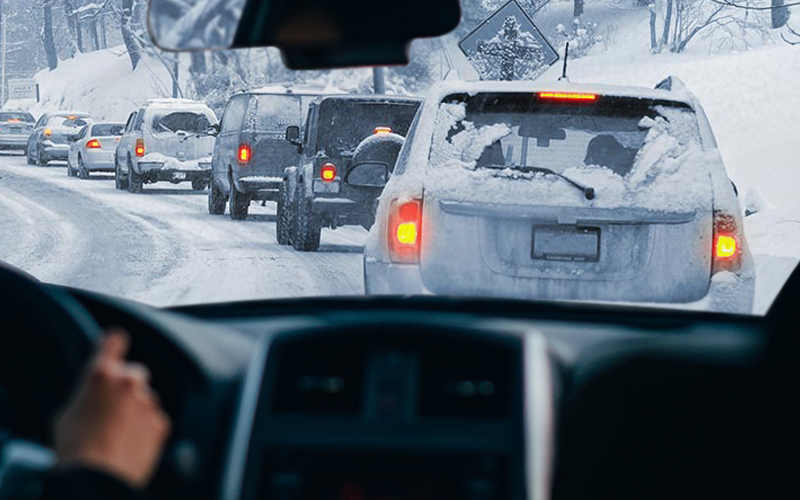
Snow can create some beautiful scenery throughout Bucks and Montgomery counties. But it also creates dangerous driving conditions, dramatically raising the risk for automobile accidents.
“Nationwide, nearly 139,000 people are injured every year in car crashes on roads covered by snow, ice or slush,” says trauma surgeon Amanda Gifford, MD with the Level II Adult Trauma Center at Grand View Health. “Unfortunately, we see the impact of this locally, as visits to our Emergency and Trauma departments increase every time there’s a snow or ice storm.”
To keep you safe on the roads—Dr. Gifford recommends following the three “Ps” of safe winter driving from the Occupational Safety and Health Administration. They are: Prepare, Protect and Prevent.
Prepare
Get your vehicle ready. It’s been a while since we’ve had measurable snow so If you don’t have (or can’t find) your ice scraper or snow brush for your car, get one as soon as you finish reading this.
Check your tire pressure and tread depth. Fill your windshield washer fluid reservoir, and make sure your wiper blades aren’t torn or cracked. “Also, pack an emergency kit with a flashlight, jumper cables, warm blankets, and warning devices like flares,” Dr. Gifford says. “This can help you stay warm and safe until help arrives if you run into trouble.”
Clear off any snow and ice before you drive. Sweep snow from roofs and lights, and make sure your windshield and windows are clear from ice and snow, so you’ll have full visibility. Remember, in PA, it’s also a law. Drivers of a motor vehicle or motor carrier vehicle being operated on a highway must make reasonable efforts to remove accumulated ice or snow from the motor vehicle or motor carrier hood, trunk and roof. Another reminder from Dr. Gifford, “It’s OK to warm up your car, but never do so inside a garage or enclosed space. You don’t want risk the chance of carbon monoxide poisoning”.
Leave early. Assume it will take twice as long for you to get to your destination.
Protect
Buckle up. Always wear your seatbelt.
Protect your children. Make sure your infant’s car seat is installed properly. Never place a rear-facing infant seat in front of an air bag. “Children ages 12 years and younger should always ride in the back seat,” Dr. Gifford says.
Prevent
Drive slowly. Expect lower traction when driving on snow or ice. Drive below posted speed limits and practice extra caution on bridges, off and on-ramps.
Accelerate and decelerate carefully. Apply the gas slowly to regain traction and avoid skids. Don’t try to start in a hurry. Take time to slow down for a stoplight. It takes your car 10 times longer to stop completely on snowy roads.
Increase your following distance to at least five to six seconds so you have more room to stop.
Easy on the brakes. Keep the heel of your foot on the floor and use the ball of your foot to apply firm, steady pressure on the brake pedal.
Be extra careful on steep hills. If you come to a complete stop while driving uphill, it may be harder to restart. If you hit the gas too hard, you may spin your wheels. The best approach is to try to get a little momentum before you reach the hill and let that carry you to the top. As you reach the crest of the hill, reduce your speed and travel downhill slowly.
Watch for black ice. “If pavement appears slick or shiny, assume that it’s icy,” Dr. Gifford says.
Practice good driving habits. Never drive while intoxicated. Don’t drive while distracted. Get plenty of rest so you don’t drive fatigued.
Know what to do in an accident. “Stay near or in your car and call 911 immediately,” Dr. Gifford says.
Learn more about the Level II Adult Trauma Center at Grand View Health.
